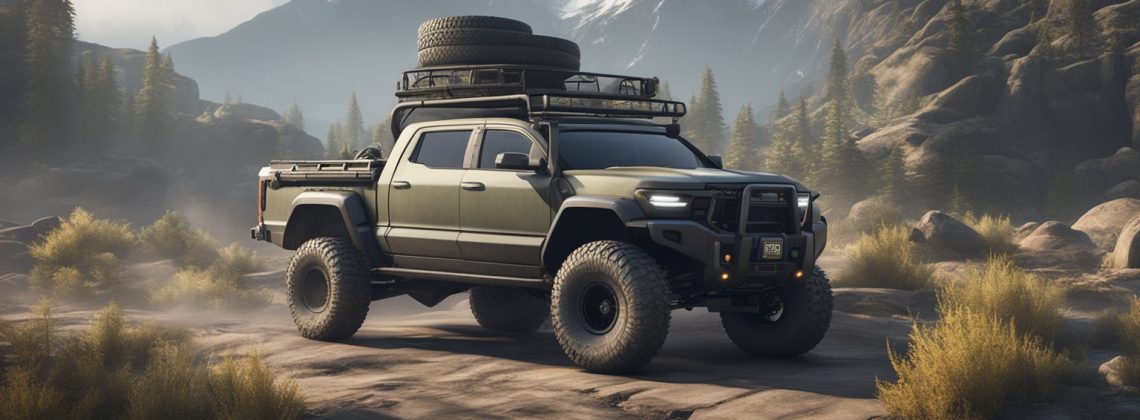
In uncertain times, preparing for unforeseen emergencies has never been more critical. A bug-out vehicle is at the core of readiness plans for many who aim to ensure their mobility and safety when a rapid evacuation is necessary. This specialized form of transportation is not just any car—it’s equipped to handle rough terrains and to carry essential supplies for survival, making it an indispensable tool in a disaster scenario.
Choosing a bug-out vehicle requires careful consideration of various factors. It’s not merely about the make and model, but also about how it fits your specific needs and environment. Whether you’re a solo adventurer or have a family to consider, the vehicle must be reliable, spacious, and durable. Moreover, once you select your vehicle, outfitting it with the right modifications can make a significant difference in its functionality. From reinforcing the body to improving the suspension, each modification is a step toward creating a more resilient escape vehicle.
Regular maintenance and preparedness to use your vehicle effectively are crucial once your bug-out plan is in motion. Knowing what to pack, how to maintain the vehicle’s condition, and understanding the legal considerations of your travel are all parts of becoming self-sufficient in a crisis. Additionally, securing your vehicle and developing a supportive network of like-minded individuals can enhance your chances of successfully managing in an emergency situation.
Key Takeaways
- A bug-out vehicle is essential for a swift evacuation and handling emergencies.
- The vehicle choice and modifications play a significant role in preparedness.
- Regular maintenance, security, and legal awareness are crucial for bug-out readiness.
What Is a Bug Out Vehicle?
When you’re prepping for an emergency evacuation, your bug out vehicle is your ticket to safety and self-reliance.
Definition and Purpose
Your bug out vehicle (BOV) is a dedicated transport that’s specifically equipped to get you out of an area during an emergency, such as natural disasters or civil unrest. The main goal of a BOV is to carry you and your essentials to a pre-determined safe location, efficiently and reliably.
- Efficiency: Your vehicle should have enough space to carry supplies and gear for sustainability.
- Reliability: It needs to perform well in various terrains and conditions you may encounter.
Types of Bug Out Vehicles
There are several types of vehicles that might suit your bug out plan, depending on your specific needs and the environment you’re in.
- Off-Road Vehicles: Jeeps and 4×4 trucks that can handle rough terrain.
- Motorcycles: For a more nimble approach, especially if you’re solo or with just one other person.
- Boats: In coastal areas or if you’re near large bodies of water.
- RVs and Campers: A home on wheels, bringing comfort and supplies together.
Each vehicle has its own strengths—whether it’s the capacity of an RV or the maneuverability of a motorcycle. Your choice should reflect your personal evacuation strategy and geographical challenges.
Choosing Your Bug Out Vehicle
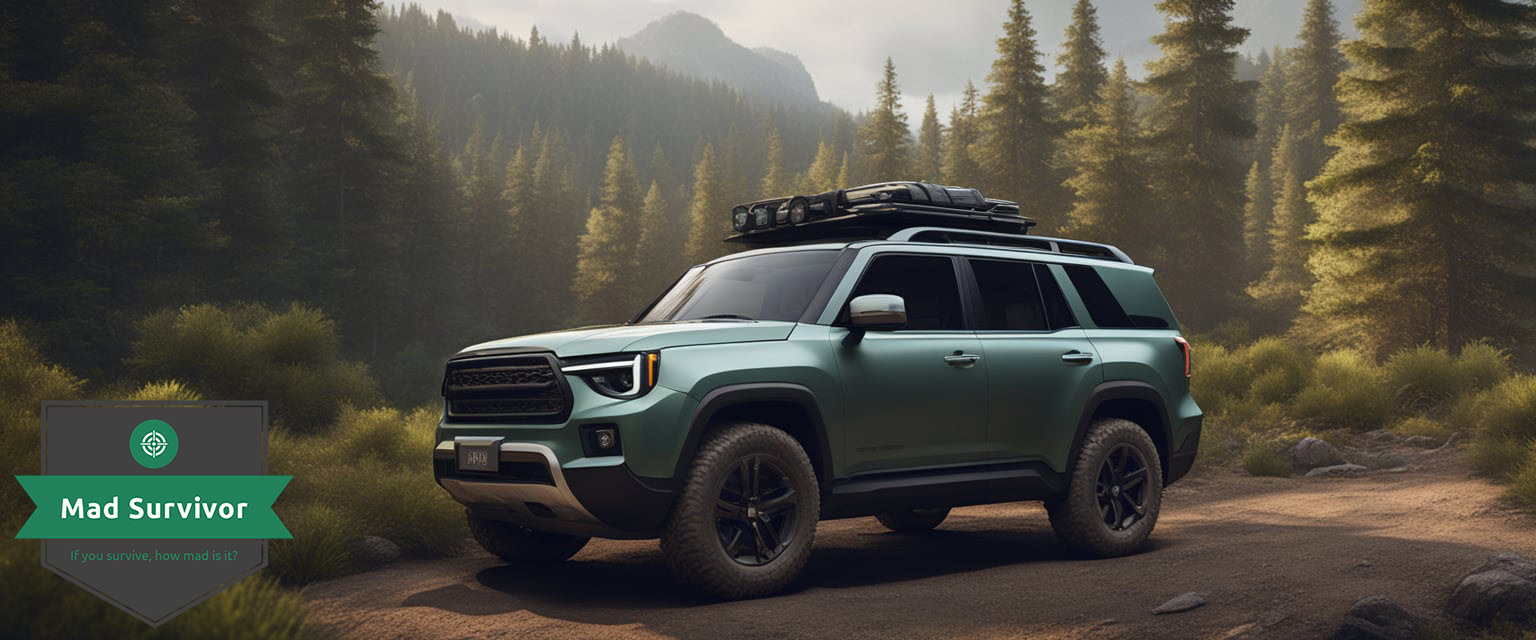
When prepping a bug out vehicle, prioritize reliability, off-road performance, and ample storage.
Key Considerations
Firstly, consider your personal needs and the potential challenges you might face in an emergency. Each aspect of your vehicle should align with your specific requirements for escape and survival.
- Size: Will you be traveling solo or with a group?
- Fuel Efficiency: More miles per gallon equals fewer stops.
- Maintenance: Can you manage basic repairs?
- Budget: Balance your financial limits with necessary features.
Vehicle Reliability
A dependable vehicle is a cornerstone of any bug out plan. Research models with a proven track record for longevity and minimal breakdowns.
- Models: Look at consumer reports and online forums for reliable models.
- Age: Newer isn’t always better; some older vehicles are renowned for their durability.
- Parts Availability: Common vehicles mean easier parts replacement.
Off-Road Capabilities
Your bug out vehicle must handle a variety of terrains to keep you moving in adverse conditions.
- 4WD vs. AWD: Four-wheel drive (4WD) is superior for tough terrain; all-wheel drive (AWD) provides good all-round performance.
- Clearance: Higher ground clearance prevents getting stuck on uneven ground.
- Tires: Invest in all-terrain tires for improved traction.
Cargo Space and Storage
Sufficient storage is essential for securing all necessary equipment and supplies.
- Internal Space: Assess the cabin space for passengers and accessible gear.
- External Storage: Roof racks and cargo boxes expand your load capacity.
- Modularity: The ability to customize interiors can optimize space utilization.
Essential Modifications
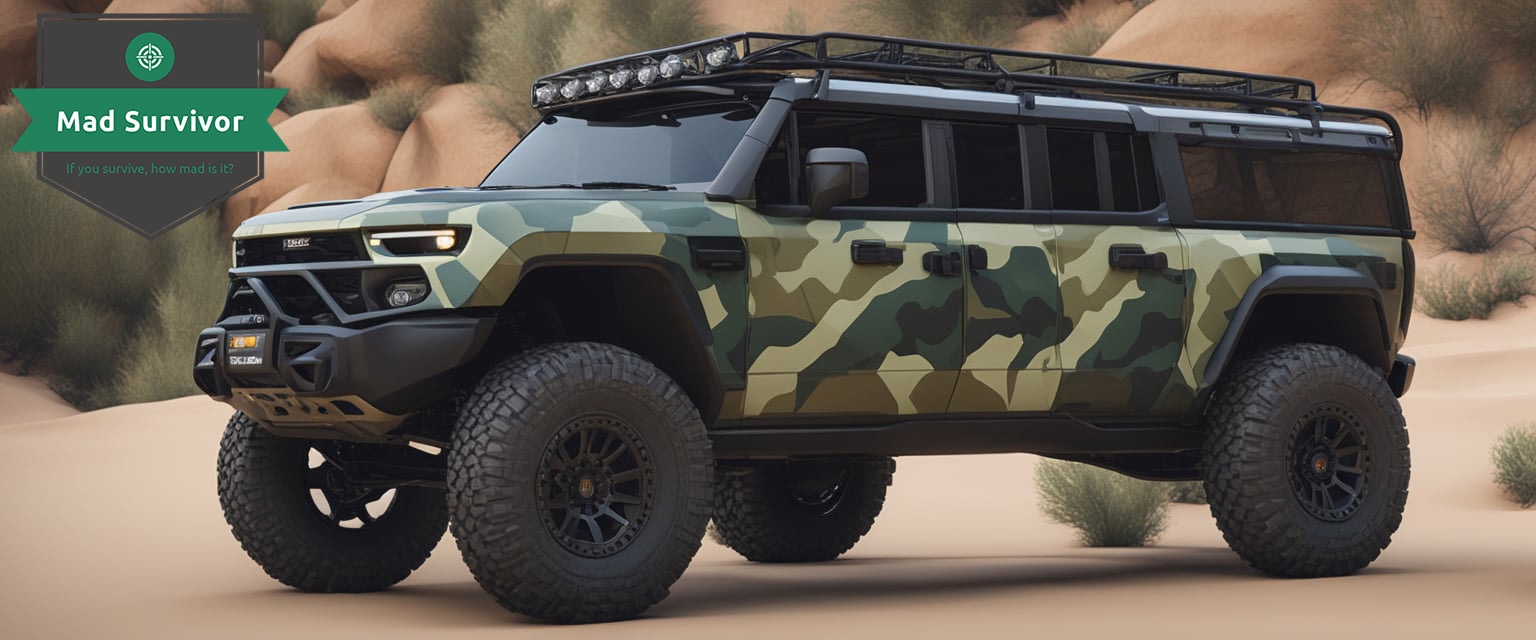
When outfitting your bug out vehicle, it’s imperative to focus on key upgrades that enhance its durability, range, and connectivity.
Armor and Protection
Windows: Install bullet-resistant glass to protect against projectiles.
- Doors: Reinforce with steel panels to resist impacts and break-in attempts.
Tires:
- Standard: Upgrade to puncture-resistant, all-terrain tires for reliability across various landscapes.
- Extras: Keep a full-sized spare tire and repair kit on board.
Fuel Efficiency and Range Enhancements
Fuel Tank:
- Upgrade: Install a larger capacity tank to extend your driving range.
- Auxiliary: Add an auxiliary fuel tank and high-quality fuel cans for backup reserves.
Engine Tuning:
- Tuning: Optimize your engine’s fuel efficiency through professional tuning or an engine control unit (ECU) remap.
Navigation and Communication Upgrades
GPS System:
- Primary: A high-end GPS with off-road mapping capabilities is essential.
- Backup: Carry paper maps of your local and regional areas.
Communication Devices:
- HAM Radio: Obtain a HAM radio license and install a long-range HAM radio for comprehensive communication.
- Satellite Phone: Invest in a satellite phone for areas without cellular coverage.
Packing Your Bug Out Vehicle
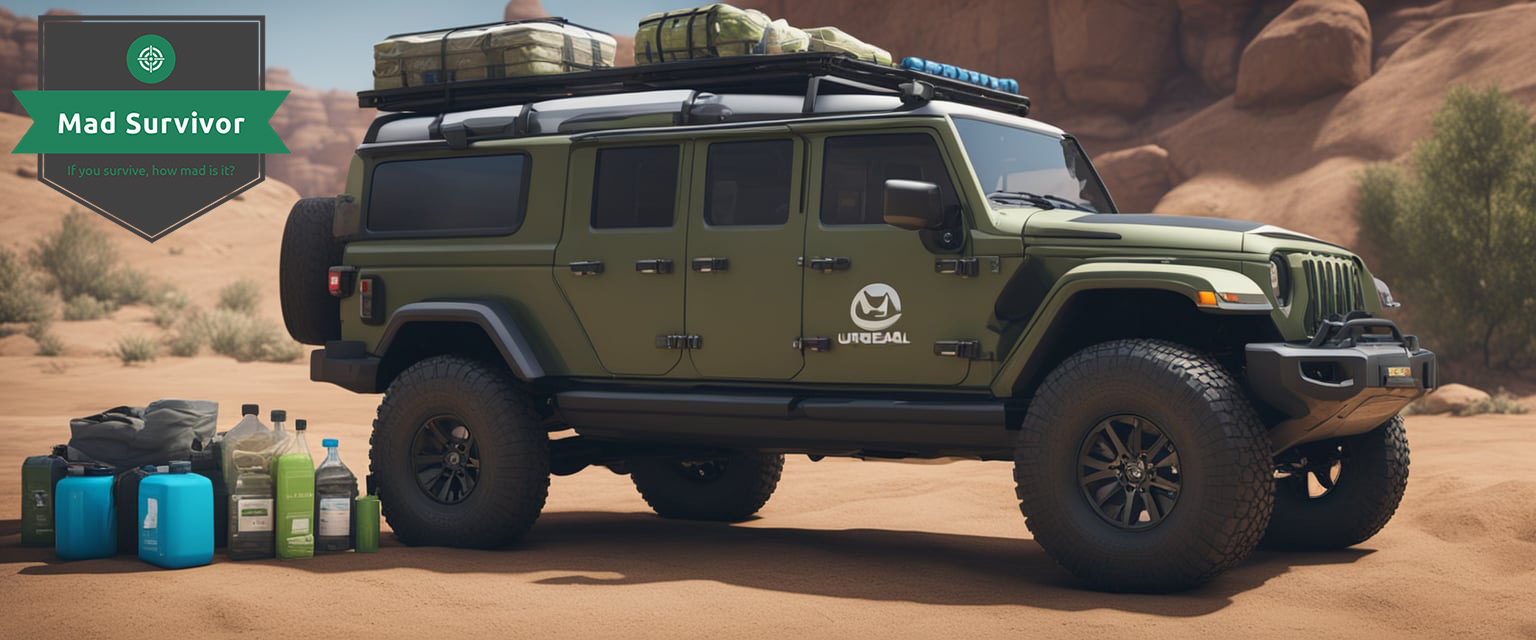
In a bug out situation, you need your vehicle to be packed methodically with essentials that ensure your survival and mobility.
Survival Gear
Your bug out vehicle should have a compartment for survival gear. Pack a durable backpack with the following items:
- First Aid Kit: Sterile bandages, gauze, antiseptic wipes, and pain relievers.
- Multitool: Knife, pliers, can opener in one.
- Fire Starter: Magnesium fire starter and matches in a waterproof container.
- Shelter: Compact sleeping bag and space blanket for insulation.
- Clothing: Weather-appropriate, moisture-wicking attire and sturdy footwear.
Food and Water Supplies
Your sustenance is crucial. Stock your vehicle with:
- Water: Minimum of one gallon per person per day. Consider a water filtration system.
- Non-Perishable Food: Canned goods, energy bars, dried fruits, and nuts. Rotate these regularly to keep them fresh.
Ensure you mark the expiration dates and resupply as needed.
Tools and Spare Parts
Mechanical issues can arise, be prepared with:
- Basic Toolset: Wrench set, screwdrivers, and a tire repair kit.
- Spare Parts: Extra fan belts, hoses, fuses, and a portable tire inflator.
- Jumper Cables: Heavy-duty cables for emergency starts.
Check your tools bi-annually for wear and ensure spare parts fit your current vehicle model.
Maintenance and Upkeep
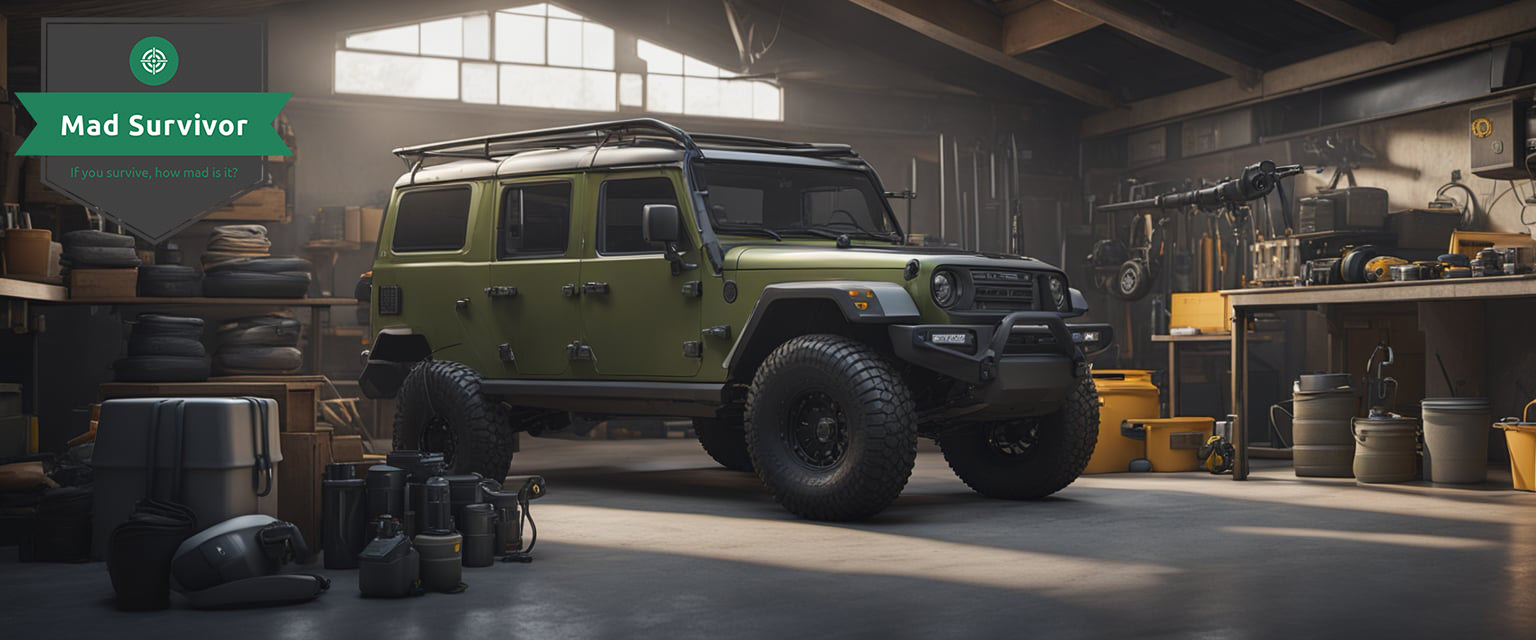
Keeping your bug out vehicle reliable requires consistent maintenance and understanding its inner workings. Here, you’ll learn the ins and outs to ensure it’s ready when you need it most.
Regular Inspection
Key Areas to Check Regularly:
- Engine: Oil level, coolant, and belts.
- Tires: Air pressure, tread wear, and spare tire condition.
- Electrical System: Battery health, headlight function, and signal lights.
- Brakes: Brake pad thickness and brake fluid level.
Frequency: At least once a month, and before any long trip.
Repair Skills
Fundamental Skills You Should Have:
- Tire Changes: Knowing how to quickly replace a tire is crucial.
- Engine Troubleshooting: Ability to diagnose common engine issues.
- Basic Fixes: Replacing wiper blades, fuses, and lights.
Resources: Consider taking a basic vehicle maintenance course or watching tutorial videos online.
Spare Part Management
Essential Spare Parts to Carry:
- Belts and hoses
- Fuses and bulbs
- Spark plugs
- Tire repair kit
Storage Tip: Organize parts in labeled, waterproof containers and check their condition every six months.
Security Measures
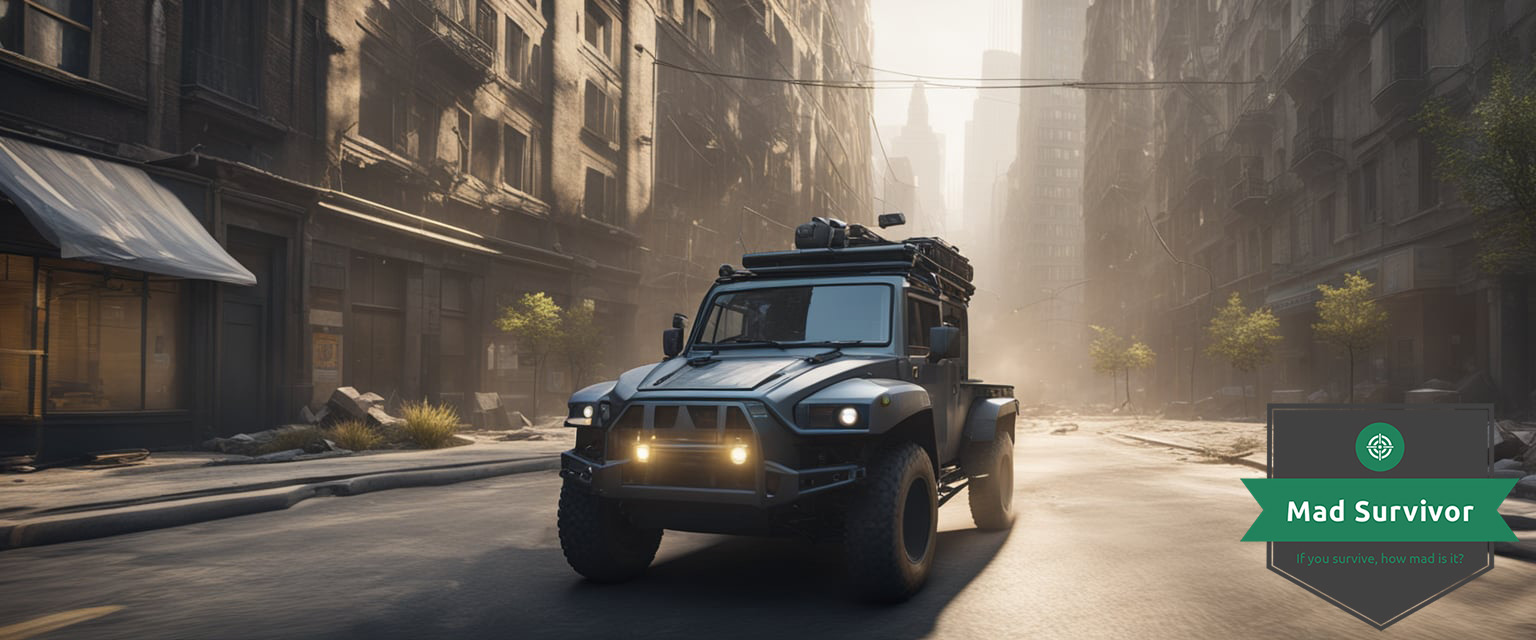
When prepping your bug out vehicle, you want to ensure it stays where you parked it. Take a look at the best ways to keep your ride secure.
Anti-Theft Devices
Locks: Get heavy-duty wheel clamps and a steering wheel lock. They’re your first line of defense and clearly visible deterrents, signaling to any would-be thief that your vehicle isn’t an easy target.
Smart Alarms: Modern alarms can send alerts straight to your smartphone. Some even allow you to track your vehicle’s location with GPS.
Stealth and Camouflage
Concealment: Consider a paint job that blends with your environment. Forest green for woodland areas or sandy tones for arid climates help your vehicle stay unnoticed.
Covers: Use a camouflage tarp or natural materials like branches to cover your vehicle when parked. It hides your vehicle’s outline and blends it into the surroundings.
Bug Out Vehicle Training
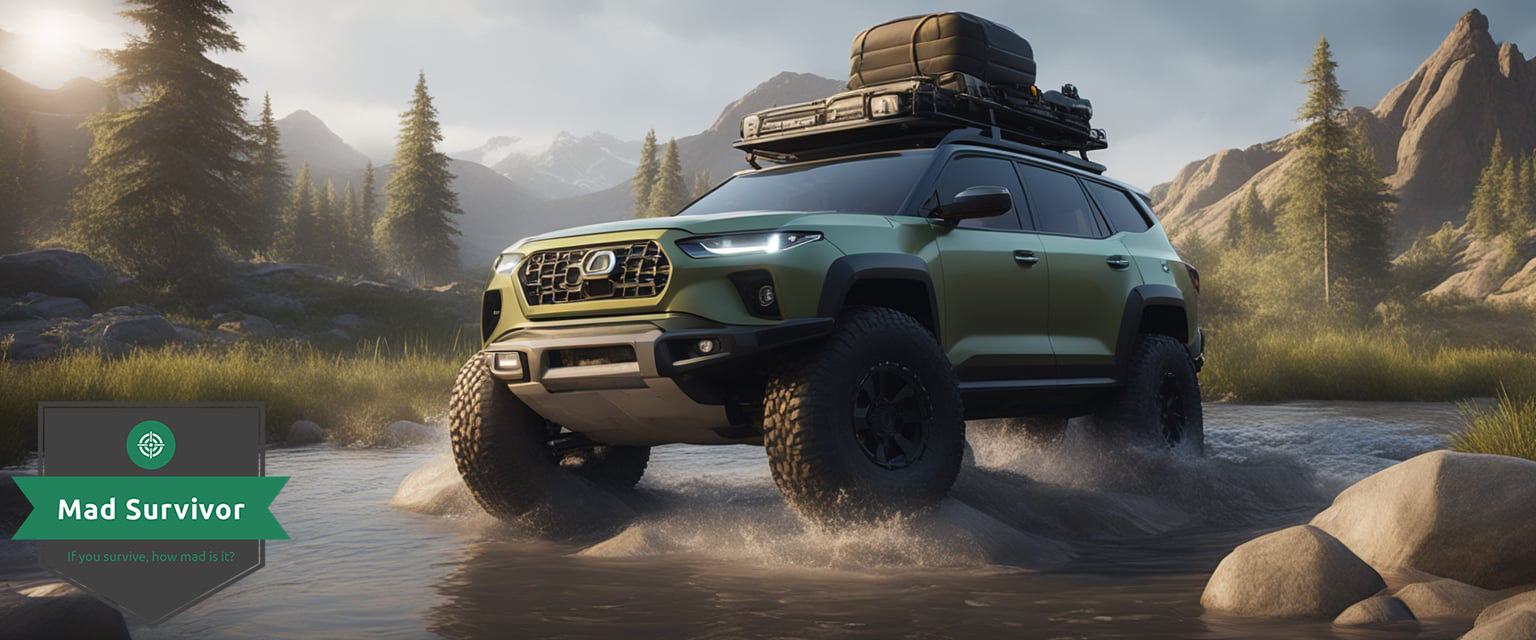
In preparing for swift evacuation, your ability to operate a bug out vehicle skillfully under stress is crucial.
Driving Skills
Maneuvering: You need to practice tight turns and quick stops. When navigating your bug out vehicle, the ability to maneuver through obstacles swiftly can mean the difference between safety and danger.
- Practice on different terrains such as:
- Asphalt: For urban conditions.
- Gravel: Mimics less maintained roads or paths.
- Off-road: Helps you prepare for natural landscapes.
High-Speed Handling:
- Find a safe location to get comfortable with higher speeds.
- Practice controlled acceleration and braking.
Emergency Scenarios
Mechanical Breakdown:
- Learn the basics of your vehicle’s mechanics. Know how to fix a flat tire and check the engine.
- Keep a printed guide in your vehicle.
Medical Emergencies:
- Equip your vehicle with a first-aid kit.
- Familiarize yourself with the items and know how to use them.
Evasive Driving:
- Practice sudden lane changes and avoidance techniques.
- Understand skid control and recovery.
Navigation Under Duress:
- Use both GPS and paper maps.
- Practice reading maps and planning alternative routes in case technology fails.
By mastering these driving skills and preparing for emergency scenarios, you’re better equipped to handle the unexpected in chaotic situations.
Legal Considerations
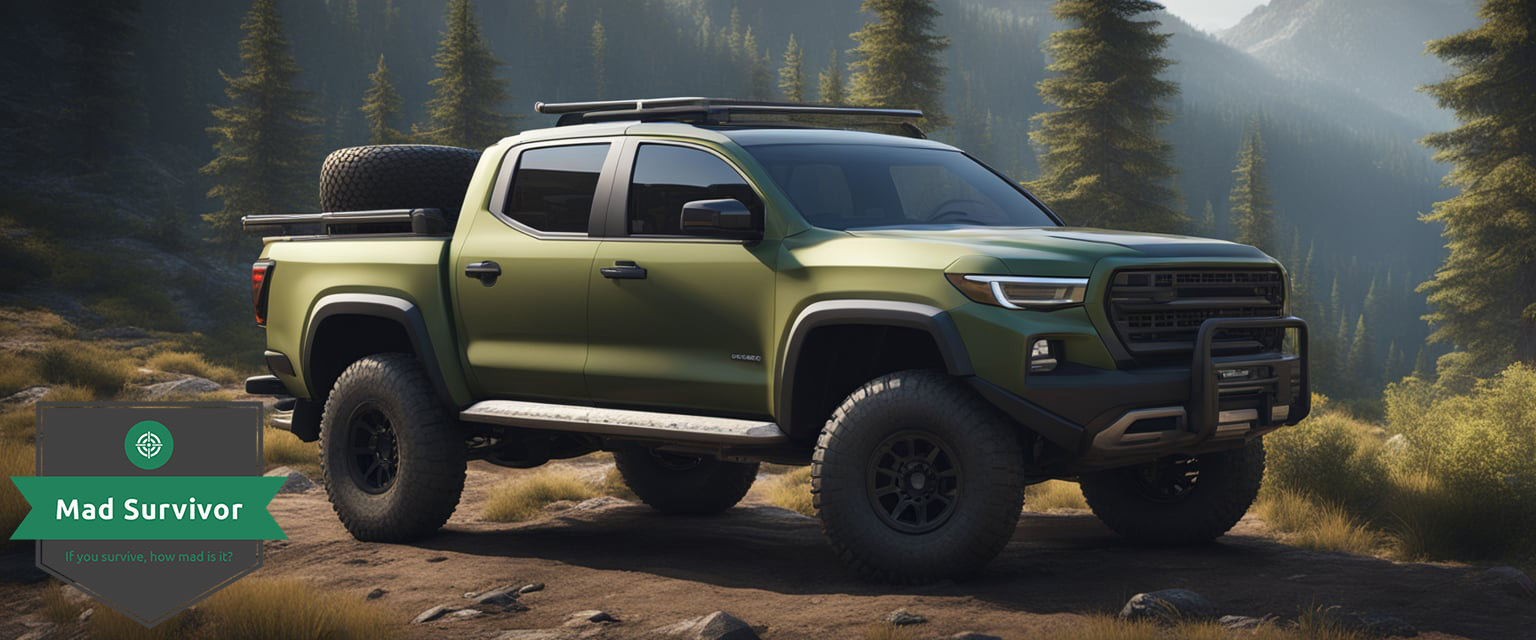
When customizing your bug out vehicle, it’s crucial to adhere to the law. The priority is ensuring your vehicle complies with legal requirements and that you have the necessary permits and documentation.
Vehicle Laws and Regulations
Check the specific vehicle codes in your area, as they can vary significantly. There are common points you’ll need to check:
- Emissions Standards: Your vehicle must meet the local emissions requirements.
- Vehicle Modifications: Some mods might be cool but illegal, such as certain types of lights or a too-loud exhaust.
- Registration Class: Depending on your vehicle’s size and purpose, your registration category can change.
Permits and Documentation
To legally operate your vehicle, you will need:
- Valid Driver’s License: Your license must be up to date.
- Vehicle Registration: Keep your registration current and in the vehicle.
- Insurance: Ensure you have the right type and amount of coverage.
Remember, always carry these documents with you to avoid trouble on the road.
Community and Network
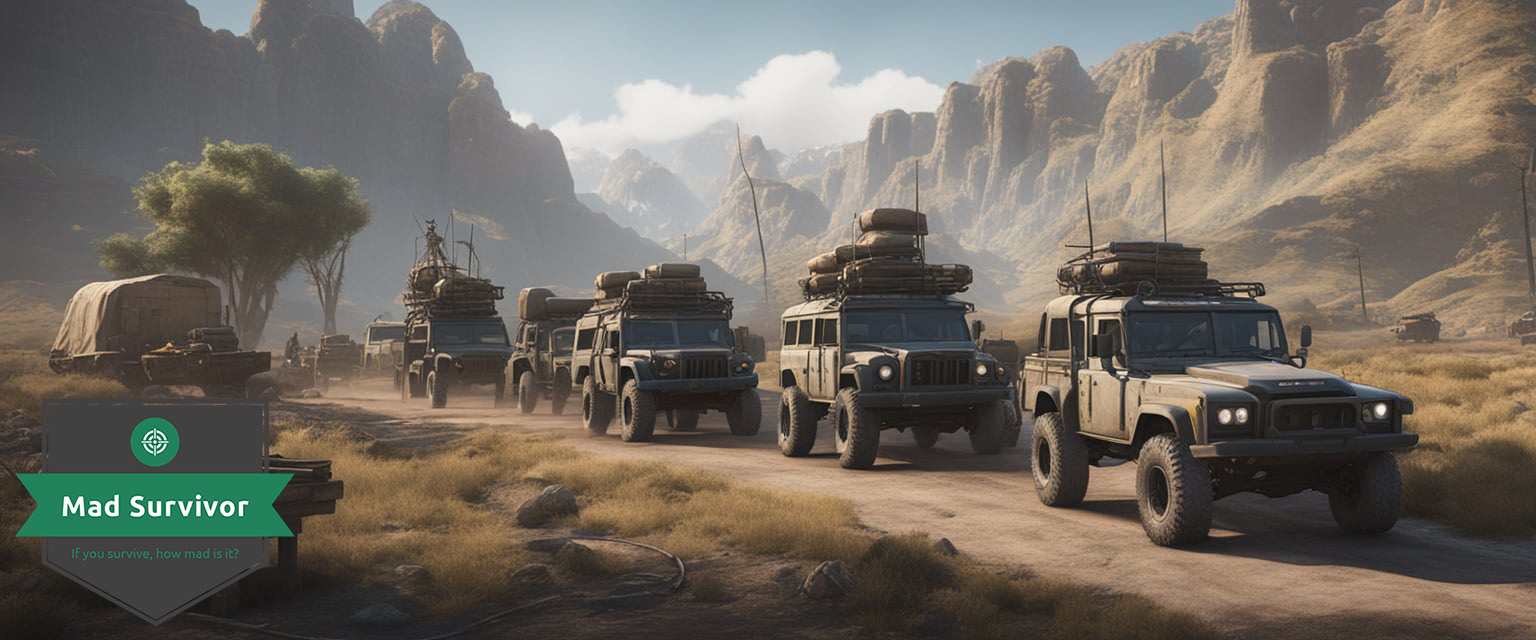
When prepping your bug out vehicle, it’s crucial for you to understand the importance of forming a reliable community and establishing a solid network. These elements ensure you’re not going it alone and have the support needed during a crisis.
Convoy Operations
In the event that you need to move as part of a group, understanding convoy operations is key. Coordination ensures you all reach your destination together and safely. Create a clear convoy plan:
- Route Selection: Choose primary and alternate routes.
- Vehicle Order: Determine the sequence of vehicles based on their capabilities.
- Breakdown Protocols: Know what to do if a vehicle in the convoy has issues.
Communication with Others
Maintaining clear and consistent communication is non-negotiable. You’ll need to decide on:
- Communication Methods:
- Radio: Essential for areas without cell service.
- Signaling Devices: For visual cues, especially in low-visibility conditions.
- Pre-arranged Signals:
- Hand signals, flashlights, and vehicle horn patterns can convey messages without sound.
Remember, in a bug out situation, your network and ability to communicate within it could make all the difference.

Leave a Reply